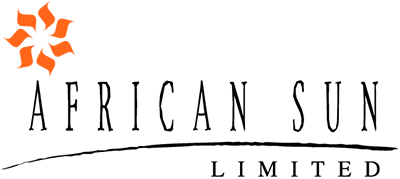Hard landing for ZiG, in wholesale, key supply
Zimbabwe Gold (ZiG), the country’s new currency and part of authorities’ coterie of interventions to restore exchange rate stability, has had a hard landing since its introduction a fortnight ago, with major traders and key suppliers using parallel market-indexed exchange rates for their pricing while also accepting only US dollars payments for certain basic goods, or outrightly rejecting payments in the new currency.
While some of the country’s major businesses have successfully reconfigured their systems to transact in both the ZiG and US dollars, there remain serious teething issues transacting in the new domestic currency in some of the country’s biggest wholesalers and key manufacturers.
The Government, through statutory instrument 2018 of 2023, allowed the multicurrency system to run until 2030.
New Reserve Bank of Zimbabwe (RBZ) governor, Dr John Mushayavanhu, introduced the new currency, ZiG, when he presented his maiden Monetary Policy Statement following his fast-tracked appointment by President Mnangagwa.
The new Governor began his term on March 28, 2024, instead of the original effective date of May 1, 2024, as the Government sought to quickly pronounce measures to stomp out the blaze of exchange rate volatility and high inflation.
The new currency, backed by foreign exchange reserves and a basket of precious metals, mainly gold, is expected to restore exchange rate and macroeconomic stability, which have manifested in runaway inflation.
Investigations by this publication revealed that there still are challenges relating to the use of ZiG to transact with two of the country’s biggest wholesalers and some of the leading manufacturers of basic products like flour and maize meal in the country rejecting the money.
Archie Dongo, who heads a local association of wholesalers opined that it was early days, expressing hope the market would soon settle.
“It may be early days yet as some have just finished configuring their systems to transact in and account for the new currency, others are still working on it and others are still dealing with the teething issues.
The market will settle down,” he said.
While some of the wholesalers accept payments in ZiG for most of their products and display an exchange rate marginally higher than the official exchange rate, the actual exchange rate being applied for crossover payments when using the domestic currency is parallel market-linked.
The exchange rates being used by the registered traders reflect exactly or nearly the premiums that existed between the Zimbabwe dollar and the US dollar before the currency switch, possibly an ominous sign of unpleasant things to follow.
Most of the wholesalers are using a minimum unofficial exchange rate of ZiG17,7/$US1. The new currency is now changing hands on the parallel market at ZiG20/US$1, nearly 50 percent premium.
In other instances, the wholesalers continue to give excuses about system challenges for their reluctance or challenges to transact in the new domestic currency.
This, however, comes as most key businesses in the country have since completed the systems change to accommodate the new currency, and these include leading retailers OK Zimbabwe and TM Pick ‘n Pay while virtually all banks have synchronised their platforms.
Notably, Zimbabwe’s Financial Intelligence Unit (FIU) was quoted in the local press this week as saying it was on the lookout for individuals and entities suspected to be violating the country’s laws on the currency, adding that businesses whose systems have not yet been successfully reconfigured to transact in the new the currency change should stop trading until their technologies have adapted.
Business Weekly is also reliably informed that some key manufacturers, involved in maize and wheat milling, bread making, and confectionery, are declining the ZiG payments arguing that some of the country’s suppliers of key raw materials, only accept US dollar payments.
Dynamics in the market present potential persistent hitches, which could affect efforts to drive widespread use of the new currency in domestic currency, as well as instill public confidence in and ensure the stability of the ZiG.
The challenges also reflect a striking resemblance to issues that dogged the Zimbabwe dollar, which was reintroduced in 2019 after a 10-year hiatus caused by hyperinflation, which was eventually scrapped this month.
Confederation of Zimbabwe Industries (CZI) president Kurai Matsheza said the country’s most influential lobby group, credited for some of the key features of the newly introduced currency, was not aware of any of its members demanding US dollar payments for their products.
“I am hearing it from you, we have not heard any of our members advising that they do not accept ZiG, but if it’s happening am sure you can let us know who the guys are and what their challenges are,” Matsheza said.
He also pointed out that the fact the issues appeared to be confined to the wholesale side of the market, required their representatives to explain the situation themselves.
“If they have those issues, they must tell us which manufacturer is insisting on that.”
However, Mercey Ndoro, the group chief executive officer of Dairibord Holdings Limited, which has one its products, being charged exclusively in US dollars by wholesalers, said her company was not selling its products exclusively in forex.
“Not at the moment, but remember when the systems were disabled we were only able to transact in US dollars; we were only able to invoice in US dollars and nothing else, but we have now gotten over the conversion,” Ndoro said.
As such, this might mean some businesses may be demanding payment exclusively in US dollars to clear stock they purchase in hard currency, which however appears to sow confusion in the market.
“We should be able to transact in ZiG. The economy got (completely) dollarised in the process of trying to convert from the Zimbabwe dollar to ZiG.
“I think it’s because of the dollarisation that happened during the transition from the Zimbabwe dollar to the ZiG.
“We sell in any approved currency, we are doing the prices for ZiG to see what it means; it is a bit difficult though given that the ZiG (exchange rate) depends on what happens on the price of gold.
“The pricing model is sort of a nightmare for us but we are trying to find a plan,” she said.-ebusinessweekly












